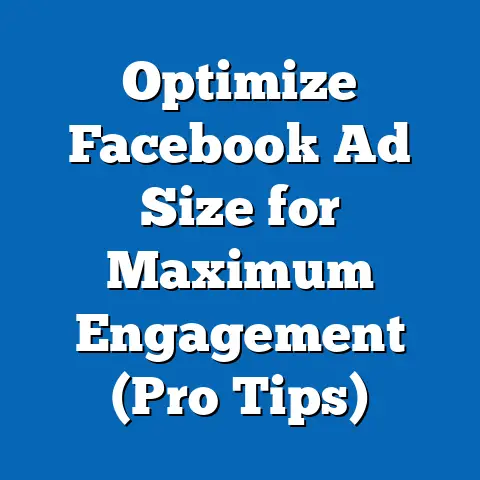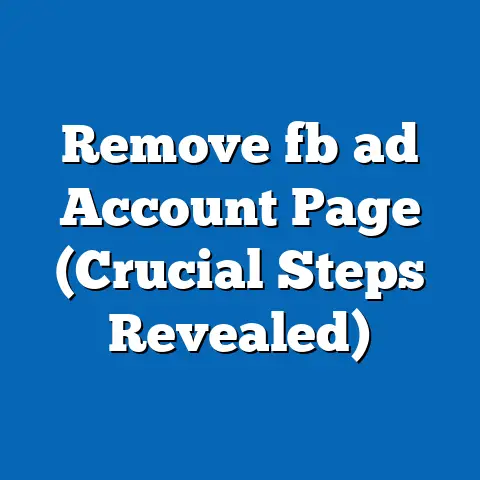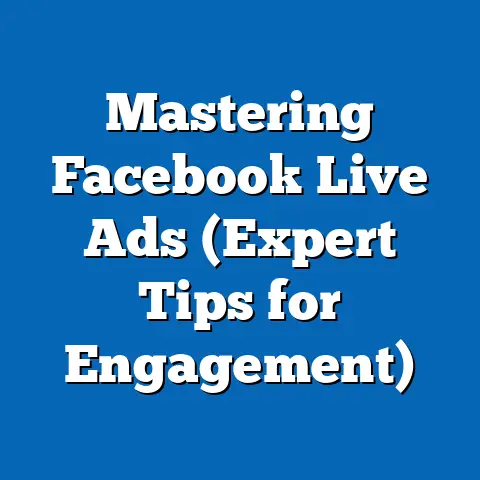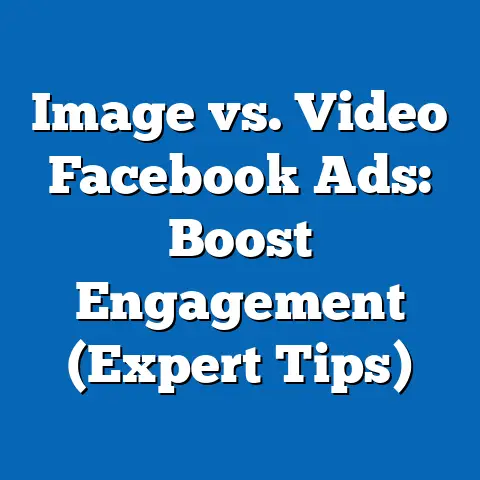Fix Facebook Hide Ads Issues (Expert Solutions Inside)
Fix Facebook Hide Ads Issues (Expert Solutions Inside)
Imagine this: You’ve poured your heart and soul into crafting the perfect Facebook ad campaign. The visuals are stunning, the copy is compelling, and your targeting is laser-focused. You launch it with a sense of excitement, ready to see the leads and sales roll in. But then… nothing. Or worse, the ad starts strong, then suddenly disappears from your audience’s feeds.
This is a common nightmare for businesses of all sizes. I remember one small e-commerce client who was ready to launch a big summer sale. They spent weeks designing ads, writing copy, and setting up their targeting. On launch day, everything looked great. Conversions were coming in, and they were ecstatic. Then, two days later, the ads just stopped showing. Panic set in. They lost valuable sales during a critical period.
The frustration is real. You’ve invested time, energy, and money, only to be met with confusion and the sinking feeling that your efforts are going to waste. Facebook’s advertising policies can feel like a labyrinth, and figuring out why your ads are hidden can be incredibly stressful. It’s like shouting into a void – you know your message is there, but no one is hearing it.
But don’t despair! There are solutions. I’m going to walk you through the common reasons why your Facebook ads might be hidden and, more importantly, provide you with actionable steps to fix the problem and prevent it from happening again.
Understanding Facebook’s Ad Policies
Facebook’s advertising policies are the bedrock of the entire platform. They’re designed to ensure a safe, positive, and relevant experience for users. Think of them as the rules of the road for the Facebook advertising ecosystem. Without these rules, the platform would be overrun with spam, misleading claims, and offensive content.
The problem is, these policies are extensive and can be difficult to navigate. It’s not always clear-cut why an ad is rejected or hidden. I’ve seen ads get flagged for seemingly minor infractions. For example, an ad for a weight loss program might be rejected if it makes unrealistic claims or uses before-and-after photos that are deemed too dramatic. An ad for a financial product might be flagged if it doesn’t clearly disclose the risks involved.
So, what are some key things to keep in mind?
- Prohibited Content: This includes anything that is illegal, discriminatory, hateful, or violent. Obvious, right? But it also includes things like promoting counterfeit products or engaging in deceptive practices.
- Restricted Content: This category includes ads that are allowed, but with certain limitations. For instance, ads promoting alcohol or gambling must adhere to strict age and location restrictions. Ads related to health and wellness often require disclaimers.
- Personal Attributes: Facebook is very sensitive about ads that directly reference a user’s personal attributes, such as race, ethnicity, religion, sexual orientation, or health condition. You can’t target an ad that says, “Are you a single mom looking for a better job?” Even if your targeting is spot on, the ad copy itself violates the policy.
- Misleading or Deceptive Claims: Ads must be truthful and accurate. You can’t make claims that are unsubstantiated or likely to deceive users. This is particularly important for ads promoting products or services that promise specific results.
Takeaway: Understanding Facebook’s ad policies is the first line of defense against hidden ads. Take the time to read through the official guidelines and ensure that your ads are in full compliance. It might seem tedious, but it’s a crucial step in preventing future headaches.
Common Reasons for Hidden Ads
Now, let’s get down to the nitty-gritty. Even if you think you’re following the rules, your ads can still get hidden. Here are some of the most common culprits:
- Targeting Restrictions and Audience Mismatches: Facebook’s targeting options are incredibly powerful, but they can also be a source of problems. If your targeting is too narrow, you might not be reaching enough people to trigger the algorithm. Conversely, if your targeting is too broad, your ads might be showing to people who aren’t interested, leading to low engagement and a lower relevance score.
- Ad Fatigue: This is a sneaky one. Even if your ad is initially successful, it can lose its effectiveness over time as people become desensitized to it. When users repeatedly see the same ad, they’re less likely to engage with it, and Facebook will eventually start showing it less frequently. I’ve seen campaigns that started with a bang fizzle out in a matter of weeks due to ad fatigue.
- Ad Relevance Scores: This is a key metric to pay attention to. Facebook assigns a relevance score to each ad based on how well it resonates with the target audience. A high relevance score means that people are finding your ad useful and engaging. A low relevance score means that your ad is either irrelevant or annoying. Facebook prioritizes ads with high relevance scores, so if your score is low, your ad will be shown less often.
- Technical Issues: Sometimes, the problem isn’t with your ad copy or targeting, but with the technical aspects of your ad. For example, if your image or video doesn’t meet Facebook’s specifications, your ad might not be displayed correctly. Or, if your website is slow to load, people might abandon the page before it fully loads, leading to a high bounce rate and a negative signal to Facebook.
Takeaway: Hidden ads can stem from a variety of issues, ranging from policy violations to technical glitches. The key is to diagnose the problem accurately so you can take the appropriate corrective action.
Here’s a step-by-step guide to troubleshooting and fixing hidden Facebook ads:Solution 1: Review and Revise Ad Content
This is the first place I always start. It’s time to put on your “compliance hat” and meticulously review every aspect of your ad creative.
- Ad Copy: Is your copy clear, accurate, and free of any potentially misleading claims? Avoid making bold promises or using language that could be interpreted as discriminatory. For example, instead of saying “Guaranteed weight loss,” try “Achieve your weight loss goals with our proven program.”
- Visuals: Are your images and videos high-quality and relevant to your message? Avoid using images that are sexually suggestive, violent, or otherwise offensive. Make sure your visuals are properly sized and formatted for Facebook’s ad specifications.
- Landing Page: Does your landing page match the message in your ad? The user experience should be seamless and consistent. If your ad promises a discount, make sure that discount is clearly visible on the landing page. And, of course, make sure your landing page is mobile-friendly and loads quickly.
Pro Tip: Use Facebook’s Ad Library to see examples of ads that are running successfully in your industry. This can give you a sense of what’s working and what’s not. It can also help you identify potential compliance issues that you might have overlooked.
Solution 2: Optimize Targeting Settings
Your targeting is the key to reaching the right people with your message. Here’s how to fine-tune your settings:
- Audience Size: Is your audience too narrow or too broad? A sweet spot is generally between 500,000 and 5 million people. If your audience is too small, you might not be reaching enough people to generate meaningful results. If it’s too large, your ads might be showing to people who aren’t interested.
- Detailed Targeting: Use Facebook’s detailed targeting options to reach people based on their interests, behaviors, demographics, and connections. Experiment with different combinations of targeting criteria to see what works best.
- Lookalike Audiences: These are powerful tools for expanding your reach. A lookalike audience is a group of people who share similar characteristics with your existing customers. You can create lookalike audiences based on your website visitors, email list, or Facebook page fans.
- Placement Optimization: Facebook offers a variety of ad placements, including the Facebook News Feed, Instagram Feed, Audience Network, and Messenger. Experiment with different placements to see where your ads perform best.
Pro Tip: Pay close attention to your audience insights. Facebook provides data on the demographics, interests, and behaviors of the people who are engaging with your ads. Use this data to refine your targeting and improve your results.
Solution 3: Monitor Ad Performance and Make Adjustments
Facebook advertising is not a “set it and forget it” activity. You need to constantly monitor your ad performance and make adjustments as needed.
- Key Metrics: Pay attention to key metrics such as reach, impressions, click-through rate (CTR), cost per click (CPC), and conversion rate. These metrics will give you a sense of how well your ads are performing.
- A/B Testing: This is a crucial technique for optimizing your ads. A/B testing involves creating multiple versions of your ad and testing them against each other to see which one performs best. You can test different headlines, images, copy, and calls to action.
- Budget Allocation: Are you allocating your budget effectively? If you’re seeing strong results from one ad set, consider increasing the budget for that ad set. If you’re seeing poor results from another ad set, consider pausing it or reducing the budget.
Pro Tip: Use Facebook’s automated rules to automate some of your ad management tasks. For example, you can set up a rule to automatically pause an ad set if the cost per conversion exceeds a certain threshold.
Solution 4: Utilize Facebook’s Support Resources
Don’t be afraid to reach out for help! Facebook offers a variety of support resources to help advertisers troubleshoot issues.
- Ads Manager: This is your central hub for managing your Facebook ads. The Ads Manager provides a wealth of information on your ad performance, as well as tools for creating and editing your ads.
- Business Help Center: This is a comprehensive resource for finding answers to common questions about Facebook advertising. You can search for articles on specific topics or browse by category.
- Facebook Support Chat: If you’re still struggling to resolve your issue, you can contact Facebook support directly through the chat feature. Be prepared to provide detailed information about your ad campaign and the issue you’re experiencing.
Pro Tip: When contacting Facebook support, be polite, patient, and persistent. The support representatives are often dealing with a high volume of requests, so it might take some time to get a response.
Solution 5: Experiment with A/B Testing
A/B testing is a simple concept with powerful results. It’s about testing different variations of your ads to see what resonates best with your audience.
- What to Test: You can A/B test almost anything, from headlines and images to call-to-action buttons and targeting options.
- How to Set Up: Facebook makes it easy to set up A/B tests within the Ads Manager. You can create multiple versions of your ad and specify which elements you want to test.
- Analyzing Results: After running your A/B test for a sufficient amount of time, analyze the results to see which version performed best. Use this information to optimize your future ad campaigns.
Pro Tip: Start with small, incremental changes. Don’t try to test too many things at once. Focus on testing one or two key elements at a time so you can accurately measure the impact of each change.
Case Studies and Real-World Examples
Let’s look at a couple of real-world examples to illustrate how these solutions can work in practice.
Case Study 1: E-commerce Store with Low Relevance Scores
A small e-commerce store selling handmade jewelry was struggling with low relevance scores and hidden ads. After reviewing their ad content, they realized that their images were low-quality and didn’t accurately represent their products. They invested in professional photography and updated their ad visuals. They also refined their targeting to focus on people who had previously shown interest in similar products. As a result, their relevance scores increased, their ads started showing more frequently, and their sales jumped by 20%.
Case Study 2: Local Restaurant with Ad Fatigue
A local restaurant was running the same Facebook ad for several months, and they started to notice a decline in engagement. They realized that their audience was experiencing ad fatigue. They created several new ad variations with different headlines, images, and calls to action. They also started experimenting with different targeting options to reach new potential customers. As a result, their engagement increased, their ads started showing to a wider audience, and their restaurant became more popular.
Takeaway: These case studies demonstrate that even small changes can have a big impact on your Facebook ad performance. By taking the time to review your ad content, optimize your targeting, and monitor your results, you can overcome the challenges of hidden ads and achieve your marketing goals.
Conclusion
Hidden Facebook ads are a frustrating reality for many businesses, but they don’t have to be a roadblock. By understanding Facebook’s ad policies, identifying the common reasons for hidden ads, and implementing the expert solutions outlined in this article, you can take control of your advertising and achieve your marketing goals.
Remember, Facebook advertising is an ongoing process of learning, testing, and optimization. Don’t be afraid to experiment with different strategies and tactics to see what works best for your business. And most importantly, don’t give up! With the right knowledge and tools, you can navigate the complexities of Facebook advertising and unlock its full potential.
So, take action today. Review your ad content, optimize your targeting, monitor your results, and utilize Facebook’s support resources. Your ads are waiting to be seen, and your audience is waiting to be engaged. Now go out there and make it happen!





